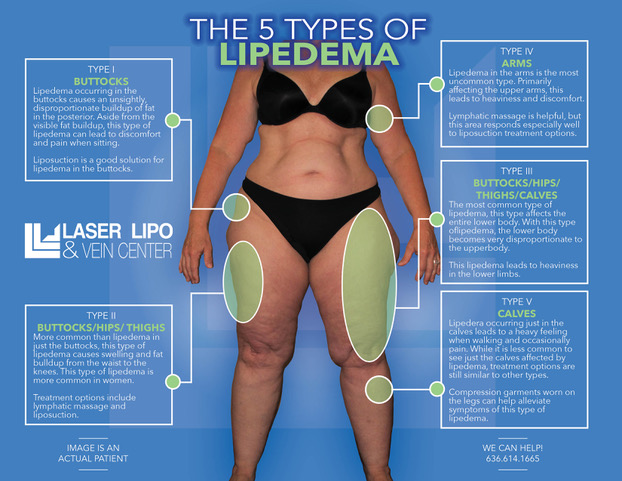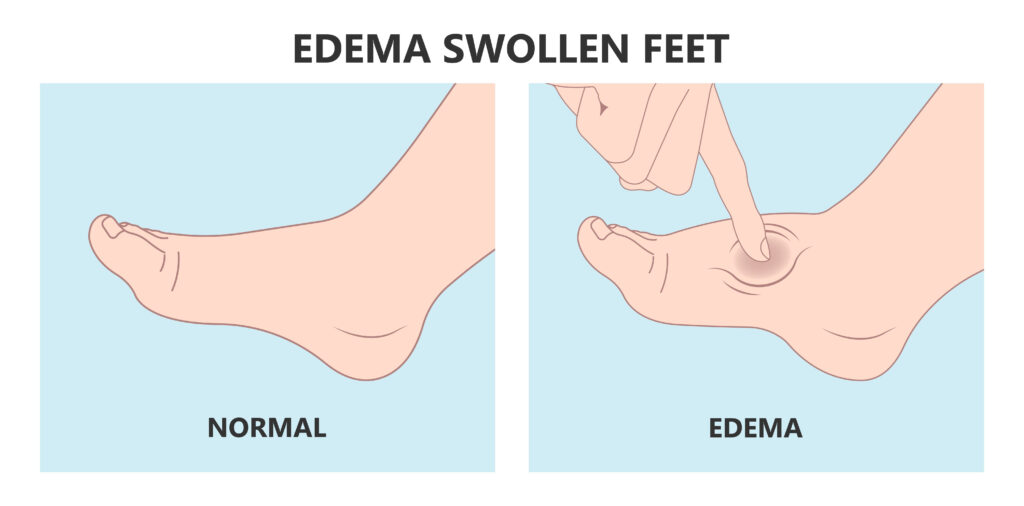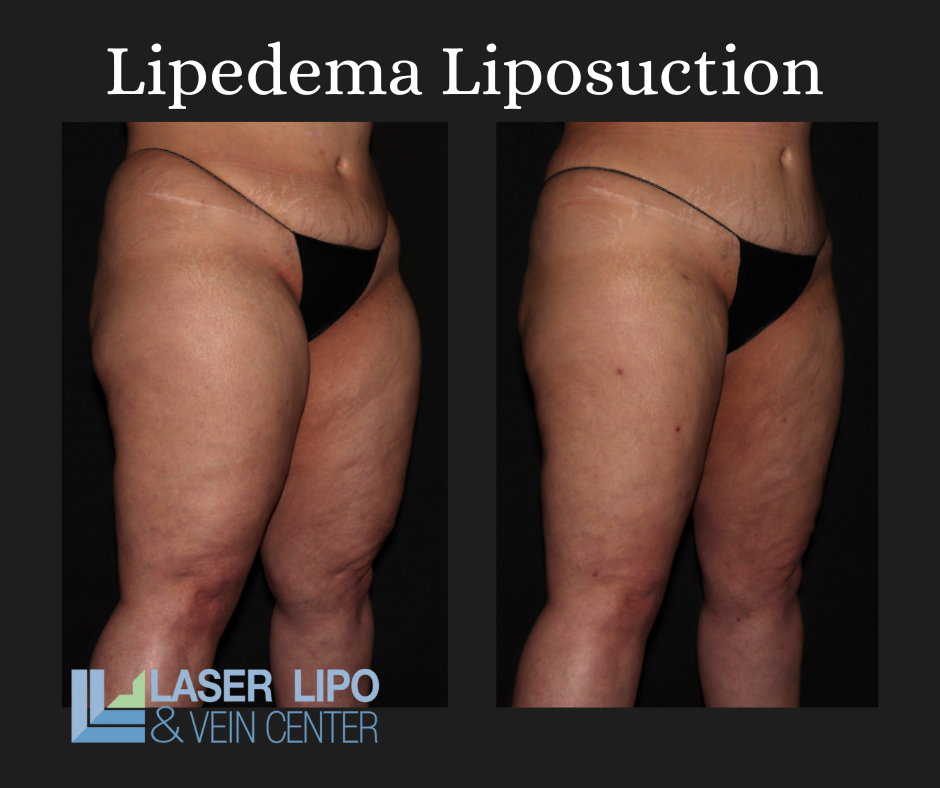June is Lipedema Awareness Month, a time dedicated to raising awareness, providing resources, sharing knowledge, and advocating for equitable healthcare for patients with this complicated, misunderstood, and often misdiagnosed disease. This article will explore the history of lipedema, its symptoms, stages, diagnosis, treatment options, and the importance of research and awareness campaigns. By understanding the key aspects of lipedema and its management, we can help support those affected by the condition and contribute to a more informed and inclusive healthcare system.
Lipedema is a fat disorder that mainly affects women and causes enlargement of both legs due to fat deposits under the skin. It’s characterized as a “progressive disorder,” meaning it worsens over time. In severe and more progressive cases, the trunk and upper body may also be affected, including the arms and upper back, and it’s often misdiagnosed and incorrectly treated as general obesity.


Lipedema is a disease that leads to the excessive buildup of fat cells, primarily in the arms and legs. Going far beyond the appearance of extra pounds, those who suffer from Lipedema often have large pockets of fat on their limbs that appear disproportionate compared to the rest of the body. Medical professionals often misdiagnose and dismiss lipedema as simple obesity, leaving affected women with an endless cycle of disappointment, frustration, and pain. Lipedema does not respond to a diet and exercise routine, yo-yo dieting, or juice cleanses.
Women suffering from Lipedema often report the disease associated with painful symptoms that trigger difficulties in dealing with everyday activities. Excessive swelling often comes with pain, numbness, and bruising. In its advanced stages, Lipedema can impact mobility and provoke vascular and lymphatic swelling, leading to further medical complications.
Lipedema is characterized by an abnormal accumulation of fat cells in the body, resulting in bulging, irregular fat in the affected areas. The legs are the most commonly affected, but the condition can also spread to the torso and arms. Symptoms of lipedema can be debilitating, and the fat cells associated with the condition are resistant to both diet and exercise programs.
Some common symptoms of lipedema include:
Lipedema progresses through three distinct stages, each with its own set of characteristics:


Several conditions can present similar symptoms to lipedema, making accurate diagnosis challenging. These conditions include:
Obtaining a correct lipedema diagnosis is crucial for effective treatment and management. Diagnosis typically involves a combination of a physical exam, patient questionnaires, and additional testing, such as ultrasounds or Doppler imaging. Some diagnostic tests used to differentiate lipedema from related conditions include:


While there is no definitive cure for lipedema, several treatment options can help manage the condition and improve the patient’s quality of life. These treatments may include:


Liposuction: This surgical intervention removes excess fat deposits and may provide long-term relief for some lipedema patients. However, it should be considered in consultation with a qualified healthcare professional and as part of a comprehensive treatment plan.


Despite being identified over 80 years ago, lipedema remains under-researched and poorly understood. Increased research efforts can lead to improved diagnostic techniques, better treatment options, and a deeper understanding of the condition’s underlying causes. Lipedema Awareness Month serves as an opportunity to raise awareness of the condition, educate healthcare professionals and the public, and support ongoing research initiatives.
There are several ways to participate in Lipedema Awareness Month and support patients living with the condition:
Lipedema Awareness Month is a crucial time for raising awareness, providing resources, and advocating for patients living with this often misunderstood and misdiagnosed condition. By educating ourselves and others, supporting research efforts, and promoting inclusive healthcare policies, we can contribute to a more informed and compassionate healthcare system for all those affected by lipedema.
Lipedema, a condition characterized by abnormal fat accumulation in the lower body, affects millions of women worldwide but remains largely underdiagnosed. The disorder can cause swelling, discomfort, and mobility issues, often leading to body image struggles and self-consciousness. Despite this, several celebrities have courageously opened up about their experiences with Lipedema, aiming to empower others and raise awareness about the condition. In this article, we highlight ten celebrities with lipedema who embraced their Lipedema diagnosis and continue to lead successful lives in the spotlight.
Lipedema is a condition that primarily affects women and is characterized by painful swelling of the legs and buttocks. It is known as a “painful fat disorder” because it causes fat to accumulate in the lower body, leading to discomfort and difficulty moving.
Lipedema can be challenging to diagnose because its symptoms are often similar to other conditions, such as obesity and lymphedema. Additionally, the cause of lipedema is still unknown, although it is believed to be a genetic disorder triggered by hormonal changes.


British-American actress Mischa Barton is known for her stellar performances on both the big screen and television. Although not officially confirmed, the appearance of her legs in numerous paparazzi shots suggests that Barton could have Lipedema. Despite the challenges of living with this condition, Barton has continued to excel in her career, proving that Lipedema does not define one’s success or talents.


Canadian singer-songwriter Nelly Furtado has been open about her struggles with self-image and body proportions. Her pear-shaped body, a common characteristic of Lipedema, has not deterred her from becoming a Grammy Award-winning artist. Furtado is a prime example of how embracing one’s unique qualities and focusing on one’s talents can lead to great achievements, despite living with Lipedema.


British actress Maisie Smith, known for her roles in television and film, has also been suspected of having Lipedema due to the appearance of her legs. While Smith has not explicitly discussed her condition, her success in the entertainment industry demonstrates that a Lipedema diagnosis does not need to overshadow one’s accomplishments.


Kelly Clarkson, a famous singer and songwriter, has openly discussed her struggles with Lipedema. Diagnosed in 2006, Clarkson has managed her symptoms through lifestyle changes, healthy eating, and proper treatment. Her openness about her condition and continued success in the music industry serves as an inspiration for those living with Lipedema.


Television personality and radio host Wendy Williams has vocalized her experience with Lipedema and its associated challenges. Williams has tried to maintain a healthy lifestyle and balance her weight while living with the condition. Her transparency about her Lipedema journey has brought awareness to the issue and paved the way for more open conversations about the condition.


Reality TV star Shaughna Phillips, known for her appearance on Love Island, has openly shared her struggles with Lipedema. After her diagnosis, Phillips underwent liposuction to remove excess fat deposits from her legs. Her candid discussion of the condition and its impact on her life has helped raise awareness and empower others facing similar challenges.
Lipedema has characteristic shapes and sizes on the legs and arms, which can lead to speculation about the existence of lipedema. Of course, we must caution ourselves and others that there are clinical symptoms and specific signs on a physical exam that lead to an official diagnosis. It’s only with a good history and physical exam by a physician experienced with Lipedema that a diagnosis can be provided.
The following celebrities have been speculated to have lipedema based on photos and videos. However, they have not communicated that they have been diagnosed with lipedema.


Emmy and Golden Globe-winning actress Kathy Bates has been open about her Lymphedema diagnosis, however, there is widespread speculation that she has Lipedema. While the two share many characteristics and their treatment shares some overlap, they are two different diseases, have different complications, and require different care.
After years of struggling to find a treatment that worked for her, Bates found a doctor who understood her condition and helped her manage its symptoms effectively. Bates’ story highlights the importance of finding the right medical professional to help manage Lymphedema and its impact on one’s life and career. Bates has since become an advocate for women experiencing similar stories, as seen through her work with the Lymphatic Education & Research Network.


Legendary singer Mariah Carey has faced speculation about her possible Lipedema diagnosis due to her body proportions. If true, Carey has successfully maintained an influential career in the music industry without this disease affecting her. It’s hard to imagine a holiday season passing without hearing her voice in “All I Want for Christmas.”


Award-winning singer-songwriter Alicia Keys has been speculated to have Lipedema due to the visible fat accumulation around her thighs and lower tummy areas. Although not officially diagnosed, Keys has shown resilience and determination throughout her career. If she has been diagnosed and simply not addressed it publicly, this is another example that Lipedema does not need to hold anyone back from achieving greatness in their chosen field.


Comedian and actress Amy Schumer is another celebrity suspected of having Lipedema due to her thicker legs. Though Schumer has not confirmed her diagnosis, she has made waves in the entertainment industry. If she has Lipedema, her success proves that Lipedema does not define one’s talents or capabilities. Additionally, she’s one of the loudest and proudest for adopting body positivity.


There have been claims about whether or not parts of Kim Kardashian’s body are real or the result of implants, and there’s also debate on whether her body shape is due to Lipedema or plastic surgery. Several outlets report that Kim has said she’s been diagnosed with Lipedema, but there are no known ways to prove if she stated this or not. Either way, Kim has made a name for herself as one of the most famous and wealthy celebrities in the world, with a large part of her reputation surrounding her body and its Lipedema-like proportions.
Celebrities with Lipedema are powerful examples of resilience, determination, and self-acceptance. Their stories of struggle and triumph inspire others battling the condition to embrace their unique qualities and continue pursuing their passions. By raising awareness and fostering open conversations about Lipedema, these celebrities are helping to break the stigma surrounding the condition, encouraging those affected to seek support and treatment and empowering them to lead fulfilling lives despite their diagnosis.
Each year the country stops and takes a month to give more awareness to lipedema and those who have been diagnosed with it. June has been designated as Lipedema Awareness Month and has been observed for several years now. Take a look at what you should know about his important month each year:
When observing Lipedema Awareness Month, it is important to understand the start of lipedema itself. Lipedema was first recognized in 1940 by Mayo Clinic physicians Dr. Edgar Hines and Dr. Edgar Allen. They specifically identified the fat tissue that typically develops in the legs and occasionally arms for those diagnosed with lipedema. Even with the condition having been identified for 80 years, we still do not know everything there is to know about its cause.
Lipedema Awareness Month helps to identify lipedema for those who were not familiar with it before. Several different non-profit organizations currently offer education and research into understanding lipedema further. Become more aware of what is currently being done in this field and help those who are currently researching possible causes and cures for lipedema. One great organization to which you can donate is The Lipedema Project. You can also attend online and in-person programs to help you handle living with lipedema. Having a community behind you can make it much easier to deal with this disease.
Each year during Lipedema Awareness Month, the Fat Disorders Research Society put on their annual conference to help education those with lipedema and discuss current trends related to it. Panels are led by some of the top clinicians in the field can cover topics such as managing pain, getting emotional support, helping your lymphatic flow, and much more. Additional panels will show findings from current research into lipedema and what they mean for the future. Unfortunately, this year’s Fat Disorders Research Society Conference has been cancelled due to the ongoing COVID-19 health crisis. However, start planning today if you are interested in next year’s set of events that will be announced in the following months.
Participating in Lipedema Awareness Month is always important, but so is staying knowledgeable about lipedema at all times. Lipedema.Net along with Dr. Wright will continue to offer you everything you need to know about lipedema from research to current treatments being offered. Let us help you live easier with lipedema.
How common is lipedema? Find out here.